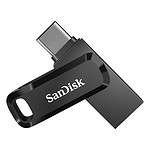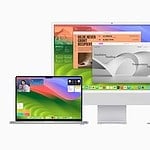The iPhone 3G was introduced on July 11, 2008. This release marked a significant upgrade from the original iPhone. With 3G connectivity, users could browse the internet and download emails much faster, making the web browsing experience on the phone much closer to what users were getting on their computer. To illustrate this, look at a comparison chart between 3G and 2G (Edge) transfer rates:
3G vs Edge Download Speeds
| 3G | EDGE | |
|---|---|---|
| Download speed | Up to 3.1 Mbps | Up to 384 Kbps |
| Technology | Third generation (3G) wireless standard | Second generation (2G) technology |

3G networks enabled video calling and streaming, as well as better internet browsing and multimedia applications. Web browsing became a much better experience for users and it created a huge move into mobile web browsing and commerce. Other features introduced with the iPhone 3G included a built-in GPS and the launch of Apple’s App Store, which forever changed the way we interacted with our phones.
The Release of the iPhone 3G
The iPhone 3G followed up the first generation (original) iPhone and was one of the most impactful releases ever for the iPhone series. Highlights include:
- Introduction of the App Store
- 3G Network Speeds
- GPS
- 2MP camera
- 3.5-inch display
- 128 MB of RAM
Announcement and Release Date
- The iPhone 3G was first announced at Apple’s Worldwide Developers Conference (WWDC) on June 9, 2008.
- The official release date was July 11, 2008.
Initial Launch Countries
On its release day, the iPhone 3G was made available in 22 countries, marking a significant expansion of Apple’s reach compared to the original iPhone.
Table: Initial Launch Countries
| Region | Countries |
|---|---|
| North America | United States, Canada |
| Europe | United Kingdom, France, Germany, Austria, Ireland, Italy, Netherlands, Belgium, Portugal, Switzerland, Denmark, Finland, Norway, Sweden, Spain, Czech Republic, Greece, Hungary, Poland |
| Asia-Pacific | Australia, New Zealand, Japan, Hong Kong |
Key Features and Improvements
The iPhone 3G brought several significant upgrades over its predecessor:
- 3G Connectivity: As the name suggests, the iPhone 3G introduced faster 3G network support, enabling improved browsing and download speeds.
- GPS: Built-in GPS functionality opened up a whole new world of location-based services and navigation capabilities.
- App Store: The launch of the App Store alongside the iPhone 3G revolutionized the smartphone experience, providing access to thousands of third-party applications.
Pricing and Availability
- The iPhone 3G was initially available in two storage options: 8GB and 16GB.
- The 8GB model was priced at $199, while the 16GB model was priced at $299 (with a two-year contract in the U.S.).
Legacy
The iPhone 3G played a crucial role in solidifying the iPhone’s position as a dominant force in the smartphone market. Its introduction of 3G, GPS, and the App Store set the stage for the rapid evolution of smartphones we’ve witnessed in the years since. It paved the way for future iPhone generations and the broader smartphone industry, shaping the way we communicate, access information, and entertain ourselves.
Key Takeaways
- iPhone 3G released on July 11, 2008.
- Introduced 3G connectivity and the App Store.
- Came with GPS, a 2MP camera, and 128 MB RAM.
Release and Impact on the Market
The iPhone 3G introduced many new features that transformed the smartphone industry. It offered faster internet speeds, new models, and more affordable pricing.
Announcement and Availability
Apple announced the iPhone 3G on June 9, 2008, at the WWDC event in San Francisco. Steve Jobs introduced it as a significant improvement over the original iPhone. The phone’s key features included support for 3G networks, which allowed for much faster internet browsing.
It was available for purchase starting July 11, 2008. Apple partnered with AT&T in the United States to provide the network support needed for the new technology. Stores saw long lines of customers waiting to get their hands on the new phone.
Pricing and Models
The iPhone 3G was available in two models: an 8GB version and a 16GB version. The 8GB model was priced at $199, making it more affordable compared to the original iPhone. The 16GB model had a higher price tag at $299. These prices required a contract with AT&T, which helped subsidize the cost.
By offering a cheaper model, Apple made the iPhone more accessible to a broader audience. The pricing strategy played a significant role in boosting sales, making it a smart move in a competitive market.
Market Reception and Sales
The iPhone 3G received a positive reception from both the public and tech critics. Customers appreciated the faster internet speeds and the new App Store, which allowed them to download third-party applications. This feature turned the iPhone into a versatile tool for both work and play.
Sales figures were impressive. Apple sold about one million units in the first weekend. This high demand led to stock shortages in many locations. The iPhone 3G’s success laid the groundwork for future models like the iPhone 3GS, which continued to build on its features and popularity.
Technical Specifications and Features
The iPhone 3G introduced significant advancements such as 3G connectivity, GPS, and a redesigned interface. It also included new hardware features that catered to both communication and entertainment needs.
Connectivity and Wireless Features
The iPhone 3G supported 3G connectivity, allowing for faster internet speeds than its predecessor. The device included Wi-Fi 802.11 b/g, enabling users to connect to wireless networks at home or in public spaces. Bluetooth 2.0 was also part of its design, which facilitated file transfers and wireless accessories. The phone had a standard 3.5mm headphone jack for audio output.
Moreover, the iPhone 3G featured GPS for improved location services. Users could more accurately access maps and location-based applications. The inclusion of Assisted GPS enhanced this capability, giving quicker and more precise positioning data.
Hardware and Performance
The device came with a 3.5-inch Multi-Touch display, offering a resolution of 320 x 480 pixels. This made interactions smooth and visually appealing. The ARM 1176JZF-S CPU, running at 412 MHz, powered the device. Although modest by today’s standards, this ensured reliable performance for its time.
Storage options included 8 GB and 16 GB variants. The iPhone 3G had 128 MB of RAM, allowing for multitasking and running applications. It was equipped with a 2 MP camera for basic photography. The 1220 mAh battery allowed for up to 5 hours of talk time on 3G or up to 12 hours on 2G.
Software and Ecosystem
Running on iPhone OS 2.0, the iPhone 3G introduced the App Store, a platform for downloading various applications. This opened a new world of functionality and customization. Users could install email, games, social media apps, and more directly onto the device.
It also supported Microsoft Exchange for email, syncing calendars, and contacts, making it suitable for business users. The Safari browser allowed for smooth and intuitive web browsing. You could easily watch videos on YouTube and play music and videos, enhancing the multimedia experience.
The combination of these features ensured that the iPhone 3G maintained a good balance of performance, connectivity, and software capabilities, meeting the growing demands of its user base.







